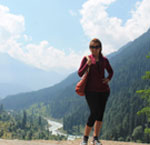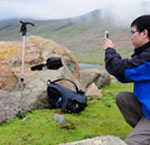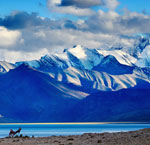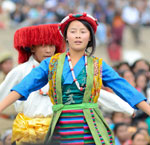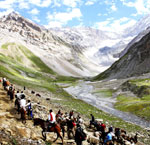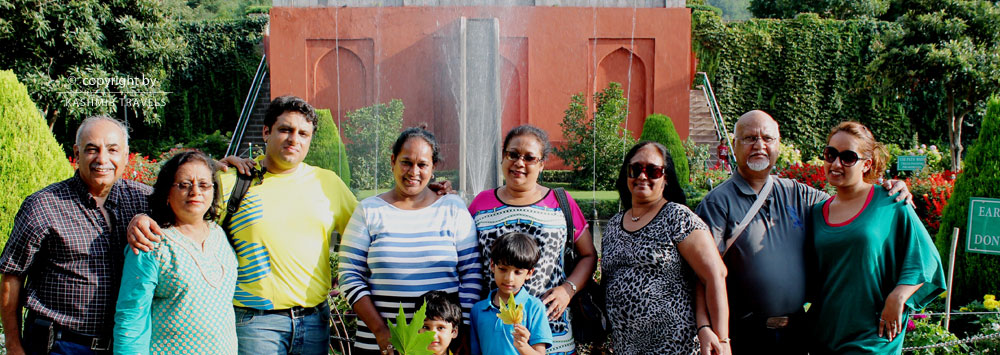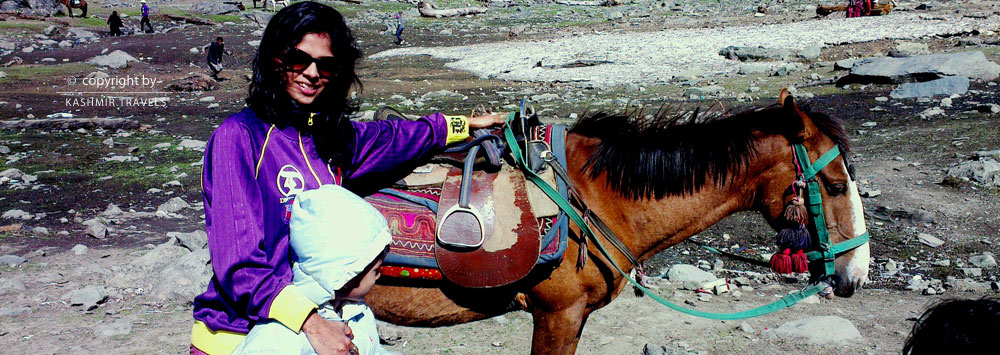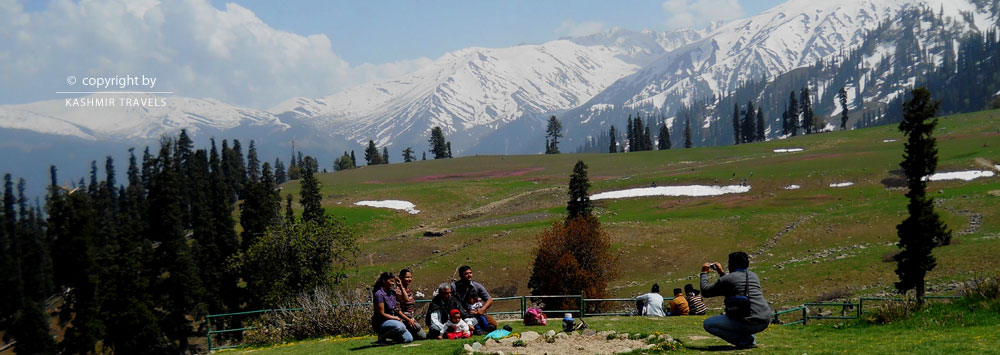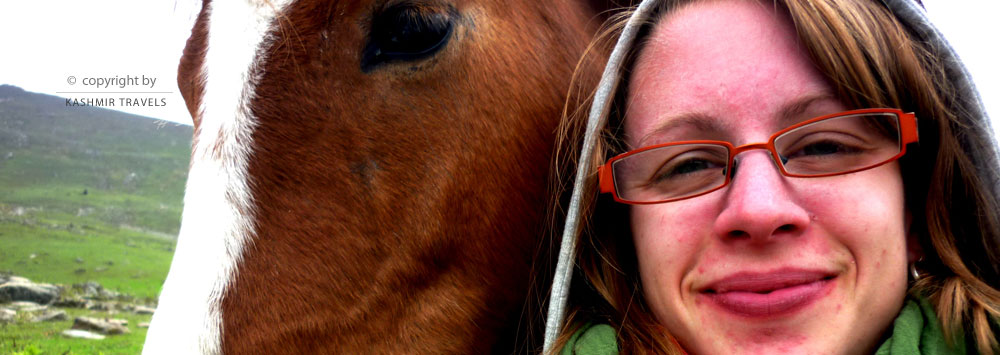LANDSCAPE OF JAMMU AND KASHMIR
Jammu and Kashmir is an exceptionally beautiful place. The landscape of this place is simply out of this world and that is why it has been referred to as the Paradise on Earth.
Lying between the Great Himalayan range and the Pir Panjal mountain range, Kashmir offers a wide variety of interesting places for sightseeing. The union territory stands to the north Himachal Pradesh and Punjab and to the west of Ladakh.
Major part of the landscape of Kashmir is mountainous. The mountains in Kashmir are categorised as Alpine and Himalayan. Some of the world’s highest peaks are located in the union territory. The region between Karakoram and Zanskar mountains forms Ladakh. Drass located near the Kargil city is the coldest place in India and said to be the coldest inhabited place of the world after Siberia.
The physical geography of J&K can be categorised into five zones which are closely related to the structural components of the western Himalayas. These expanses from west to east are comprised of plains, the foothills, the Pir Panjal Range, the Vale of Kashmir, and the Great Himalayas zone. The climate of the union territory tends to swing from alpine on the eastern edge to subtropical in the southwest. As a result of being stationed in the south, it experiences a humid, subtropical climate, whereas Kashmir valley is more towards the colder side for the major part of the year with pleasant weather in summer.
All the three divisions of the state offer a lot of attractions. J&K is home to several valleys such as the Poonch Valley, Chenab Valley, Lidder Valley, and Sind Valley. Ladakh too boasts of astounding landscapes including the breathtaking mountains and green vales. Markha Valley,Nubra valley,Dha Hanu Valley and Indus Valley are some of its attractions.
KASHMIR:
Located at an average elevation of 5,300 feet,
this intermontane valley is nearly 135 km long and 32 km in width. It is spread over an area of 15,520.3 km square. The Himalayan mountains bifurcate the valley from the Tibetan plateau whereas the the Pir Panjal range segregates it from the Punjab Plain of the Indo-Gangetic Plain.
Kashmir is edged by China in the north and east, Afghanistan to the northwest, Pakistan to the west and India to the south. Amid a variety of things to do in Jammu Kashmir, sightseeing is probably the main reason which lures tourists. The beautiful vale comprises a raft of terrains which range from from pristine lakes, snow-capped mountains, golf courses,ski resorts, coniferous hills to glacier fed rivers.
The fields of saffron,orchards and blooming colorful flowers paint it in natural colors. The climate of the place also lends its beauty.
The snowclad mountains and snow covered landscape during winters is a breathtaking vista. Kashmir is blessed with the lush greenery, verdant woods, azure lakes,healing streams, sparkling rivers, fiery chinars, alpine pastures, fertile lands and the backdrop of huge snow-capped mountains. The best place for sightseeing in Kashmir is Srinagar, the summer capital of the state of Jammu and Kashmir.
It is located centrally in Kashmir valley. Srinagar is an ancient city dwelling on the banks of the River Jhelum. Srinagar has accurately been ascribed the title of 'Land of Lakes and Gardens'. Dotted by famous Mughal Gardens, circumscribed by Himalayan mountains and perfused with pristine waters, this scenic city is abode to jaw-dropping cityscape and architectural marvels.
The lush greenery, snow-clad mountains and huge shady Chinar trees are phenomenal which unequivocally make the city a wonderland, luring globetrotters from across the world.Nishat Garden, Shalimar Garden, Chashma Shahi, PariMahal (The Fairies’ Abode), Harwan Garden are the main gardens thronged by millions of tourists and locals annually. Most of these gardens are situated at a distance of merely 8-10 kilometres from the city centre. Hazratbal shrine is also located in Srinagar on the banks of Dal Lake. The Dal Lake is circumscribed by numerous deciduous trees that promise a colourful display in every season. One of the prime attractions of Dal are Shikara and the Houseboat.
The houseboats come up in an assortment of styles ranging from luxury to basic. If you are visiting Srinagar, spending at least one night in a houseboat is a requisite and you sure are going to be mesmerized! Many other Sufi shrines are located in the vicinity of Srinagar city.
The central Mosque, an ancient architectural masterpiece, is also located in the old city Srinagar.Dal Lake, River Jhelum, Nigeen Lake, Anchar Lake adorn Srinagar. These water bodies make Srinagar more beautiful and a more frequented place than any other place in the entire state. The centres of handicrafts, which are famous all over the world, are also located in the Srinagar area.Pahalgam is a wonderful place to visit for its unique parks like Betaab Valley, Aru Valley and Chandan Valley.
Betaab valley is a phenomenal expanse by the Lidder River which is circumscribed by towering deodar and pine trees. Gulmarg or the meadow of flowers is the heartland of winter sports in India.Kashmir oozes with beauty and charm be it the primordial religious sites, pacific lakes or arresting gardens-each vista is breathtakingly astounding.
Some places that are a must-see in Kashmir include:
Gulmarg
Pahalgam
Aru
Chandanwari
Betab Valley
Sonamarg
Yusmarg
Kokernag
Verinag
Achabal
Doodhpathri
Drang
Tosamaidan
JAMMU:
The Jammu region is located in the southwestern part of J&K at the foothills of Pir Panjal mountain.It lies on the banks of the river Tawi and spreads over an area of 240 km square. The region is circumscribed by the Himalayas in the north and the northern-plains in the south. Some of the prominent rivers including Ravi, Tawi and Chenab traverse through the heart of it . The Shivalik range girdles it in the north, east, and southeast whereas the Trikuta Range circumscribes it in the northwest. The southern tract is majorly a mountainous zone , with the Shivaliks, the middle and the great Himalayas running parallel to each other in a southeast-northwest direction. The southwestern belt comprises the fertile plains. It is known as the 'city of temples.
Some famous places for sightseeing in Jammu include:
Surinsar and Mansar Lakes
Amar Mahal Museum
Dogra Art Museum
Patni Top
NooriChhamb
Ranbir Canal
JhajjarKotli
LADAKH:
Stationed at an elevation of over 3,000 m, Ladakh is the highest plateau in India and its landscape is mostly defined by the craggy terrains. This land of high passes lies between Xinjiang, Pakistan, Kashmir and Tibet. It shares its border with Pakistan occupied Kashmir in the west, China in the north and eastern part and Lahaul and Spiti in southeast. It is one of the highest regions in the world and covers an area of 45,000 square miles. The landscape of Ladakh comprises of high altitude and snow clad rugged mountains, Himalayan glaciers, arid tracts, grasslands, vast expanses of rocky terrains, color changing water bodies.
It mainly comprises high plains and deep valleys. These high plains dominate the geography of the east, which by and by tails off toward the west. Rupshu lies to its south-eastern side. The quaint monasteries add to its awe inspiring beauty. The climate of Ladakh is extremely cold and dry. In summers the temperature ranges from 5 to to 25 degree celsius whereas it can swing from -5 to 10 degree celsius in winters.
Famous attractions of Ladakh include:
Suru Valley
Nubra Valley
Zanskar Valley
Markha Valley
Leh
Pangong Lake
TsoMoriri Lake

